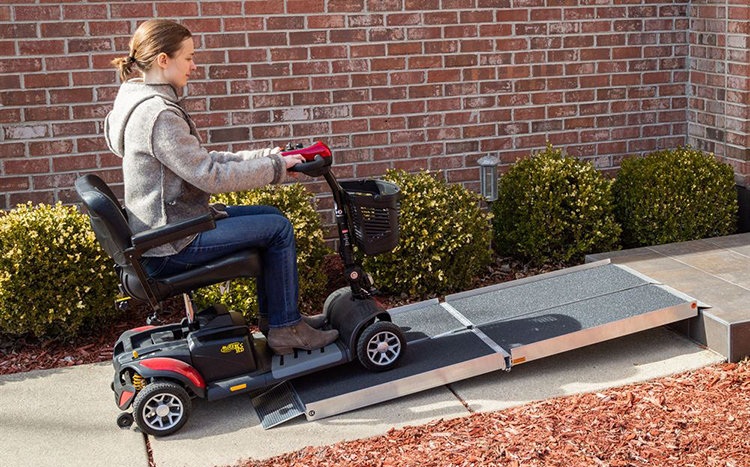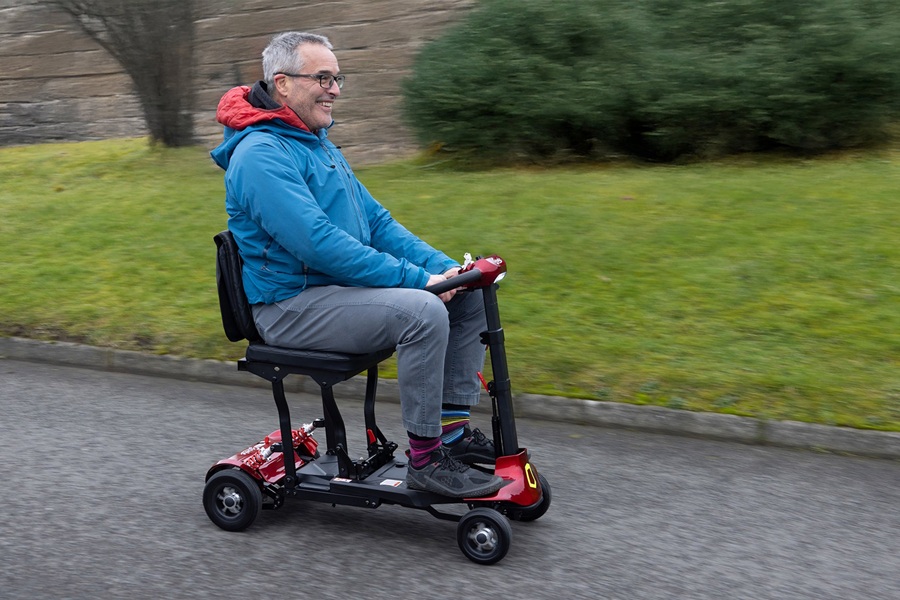
Mobility and independence go hand in hand and the right disability ramp can make all the difference. Whether you need to enter your home, navigate a small step, or load your wheelchair or mobility scooter into a vehicle, a well-chosen ramp can improve safety, comfort and accessibility.
At Monarch Mobility, we offer a wide range of ramps for disabled access , from compact threshold ramps for doorways to strong, foldable ramps for vehicles and travel.
Here’s everything you need to know before buying a ramp for disabled access, including ramp types, gradients, materials, and safety features.
Before selecting your new disability ramp, here are some questions to consider about how and where you’ll use it:
Different ramps are designed for different purposes, from wheelchair ramps for homes to mobility scooter ramps for cars, so it’s important to choose the right type for your needs.
Before purchasing a wheelchair ramp or mobility scooter ramp, carefully measure the area where it will be installed.
Consider both the width needed to accommodate your wheelchair or mobility scooter, as well as the length required to achieve the correct gradient for safe use.
Make sure there’s enough clearance at the top and bottom of the ramp, whether it’s for a doorway, threshold, vehicle, or stairs, to ensure smooth, unobstructed access.
Consider who will be positioning and moving the ramp. If you or a carer will need to lift or carry it, a lightweight foldable disabled ramp or portable mobility scooter ramp with built-in carry handles is ideal.
These ramps are easier to manoeuvre, set up, and store, making daily use safer and more convenient. Choosing a ramp with the right balance of portability and strength ensures that it can be moved quickly without compromising safety or stability.
Consider how frequently you’ll need to use your ramp, as this will determine the style and material it is made from.
Storage is an important factor when choosing your ramp, especially if space is limited. A foldable ramp or a portable ramp can be folded away compactly and stored in a cupboard, hallway, or car boot when not in use.
If your ramp will be staying outdoors, choose a durable aluminium ramp designed to withstand all weather conditions.
The material your mobility ramp is made from plays a big role in how easy it is to use, how long it will last, and where it can be placed.
Safety is key when choosing any ramp for disabled access. The right features will give you confidence and stability, whether you’re using your ramp indoors, outdoors, or for vehicle access.
The right combination of size, gradient, and weight ensures your ramp is easy to use, fits your space, and supports your mobility aid reliably.
Getting the right disabled ramp gradient ensures safety and ease of use.
There are lots of ramps available in a range of sizes to suit different doorways, thresholds, and vehicles.
Always make sure the ramp is wide enough for your mobility aid yet narrow enough to fit through doorways or entrances.
Check the dimensions carefully before you order to ensure a safe and comfortable fit.
Weight is one of the most crucial factors to consider before purchasing a ramp, as it impacts both safety and usability. Always look at these two key weight ratings to make sure your ramp meets your needs:
A quality ramp can transform your daily independence, giving you freedom to move safely and confidently.
Whether you need a door ramp for a mobility scooter, a ramp for stairs for a wheelchair, or a folding ramp for the car, Monarch Mobility has the perfect solution.
Ideal for small steps, thresholds, and doorways, threshold ramps make indoor and outdoor transitions smooth and easy.
If you need a larger mobility scooter ramp for a car or set of steps, a folding or portable ramp is a great choice.
Explore our full range of disability ramps today at Monarch Mobility — and find the ideal ramp to make your home, car, or workplace more accessible.
